For this exploration of music history, I’ve used deep convolutional neural networks to transform black and white photos into color. Enjoy these historical moments in time, never seen before in color.
Drag the sliders below to the left to see the studios and creators in full color.
Frances Densmore & Mountain Chief, 1916
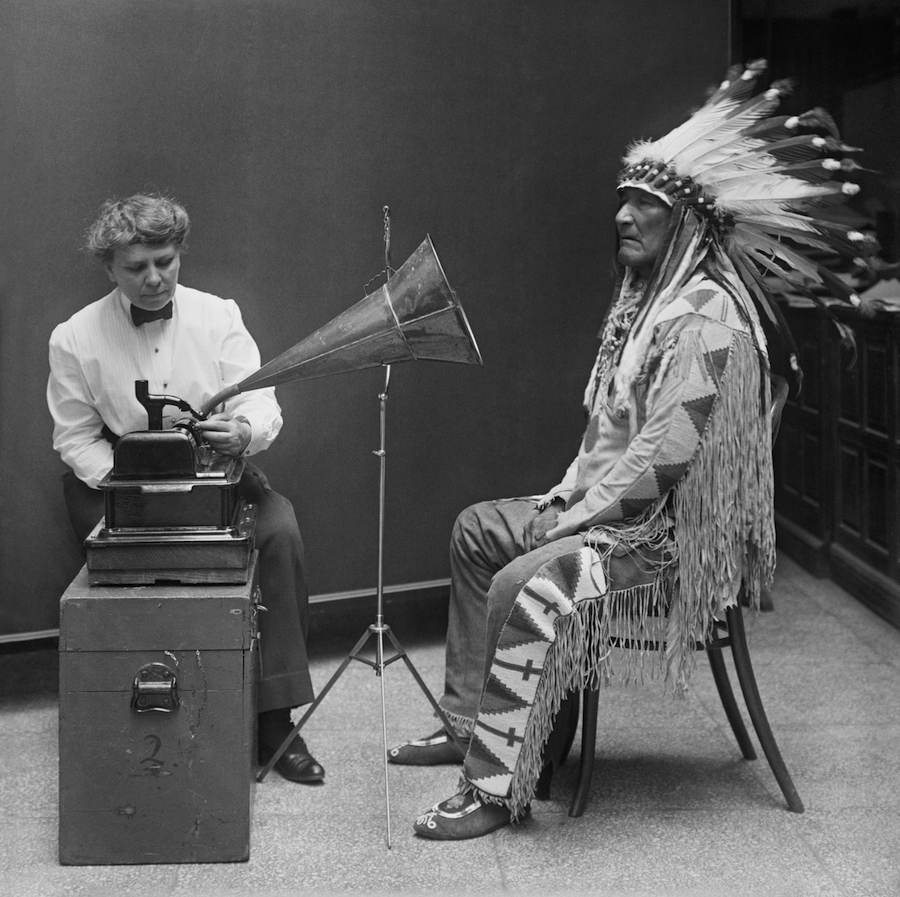
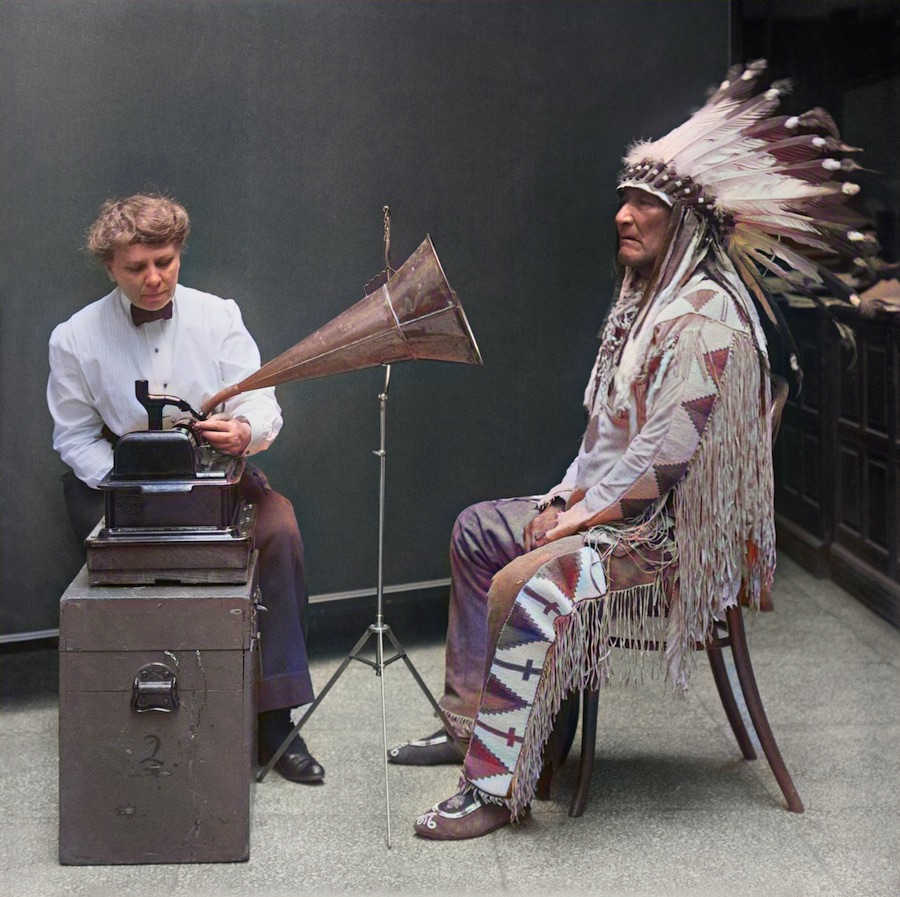
Frances Densmore was a pioneering ethnomusicologist and musician who for over half a century worked to record and interpret the music of Native Americans. In this picture, Densmore is playing a cylinder recording for Mountain Chief (Chief of Montana Blackfeet) to interpret it into Plains Indian Sign Language. Densmore’s aim was to help preserve Native languages and cultures for future generations. Currently, only 75 people in the world are reported to use the Plains Indian language.
The BBC Sound Effects Department, 1927
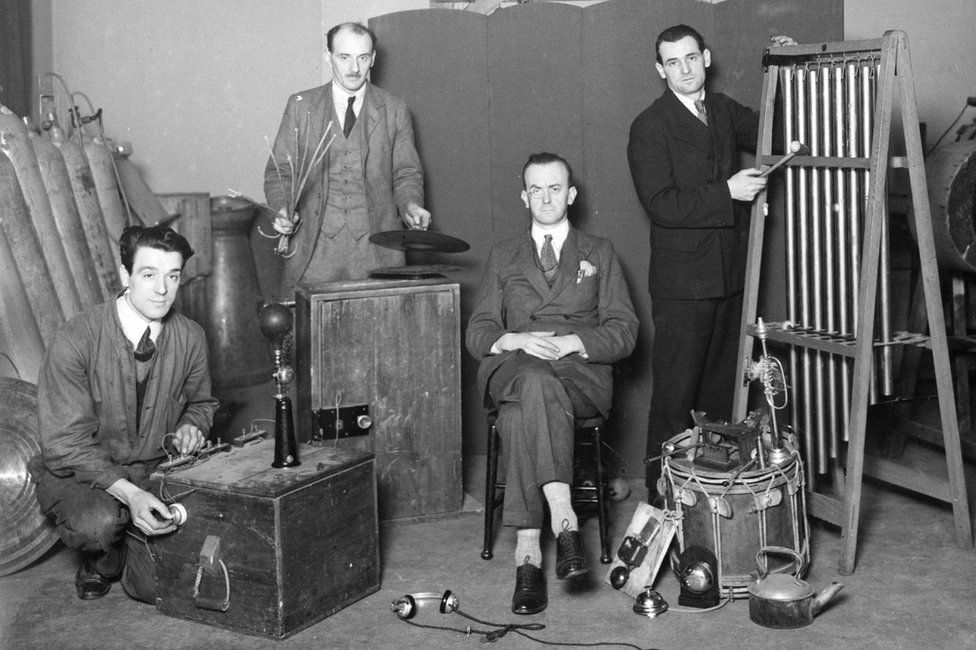
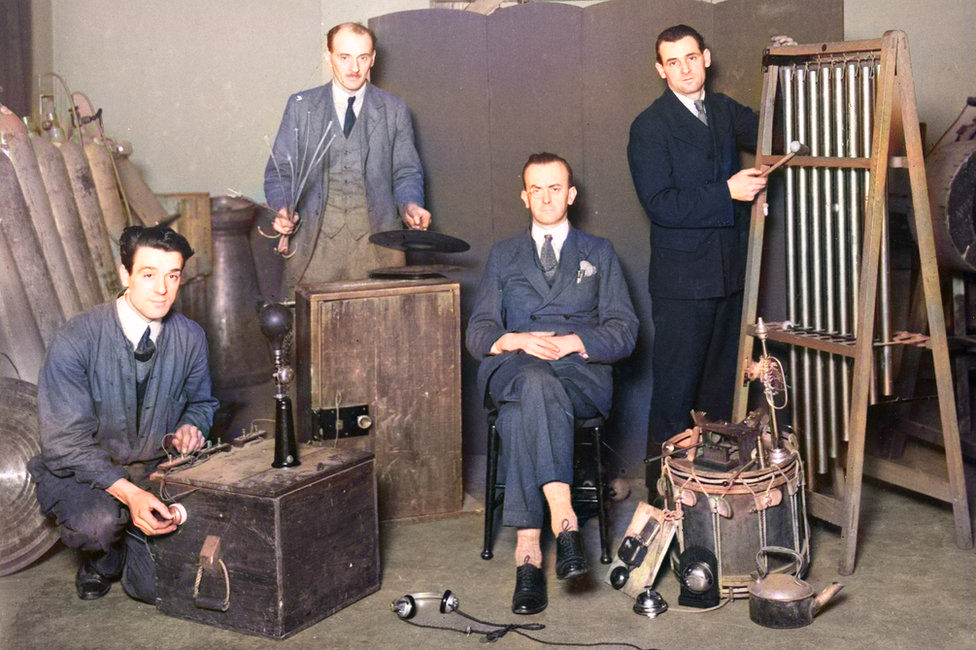
The four men pictured are foley artists reproducing everyday sound effects that were added to BBC radio shows. Did you know the BBC made over 16,000 of their sound effects freely available for personal use? The free audio samples include sounds from the 1920s – more than likely created by these men.
Léon Theremin, Demonstrating the Theremin, 1927
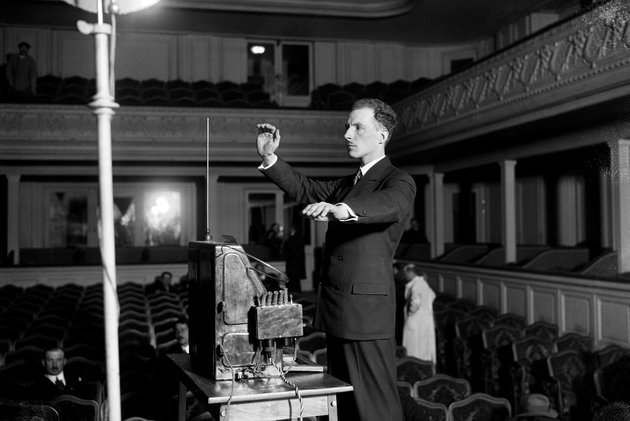
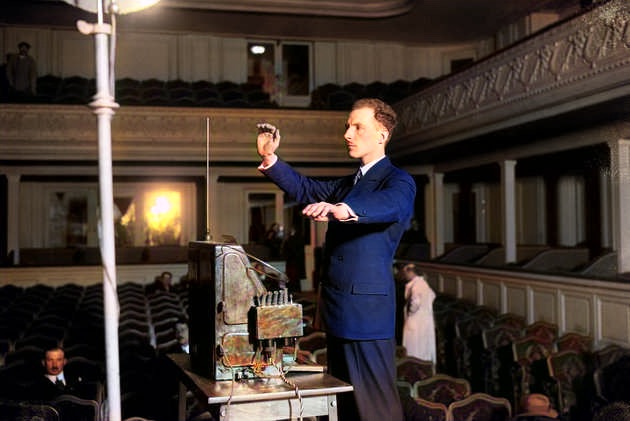
Léon Theremin was a Russian and Soviet inventor, most famous for his invention of the theremin, one of the first electronic music instruments and the first to be mass-produced. The Theremin is unique, as it is an instrument that you play without touching. Its sound is manipulated by moving your hands in the space around two antennas – one for pitch and one for volume.
Disney Sound Production Room, 1930s
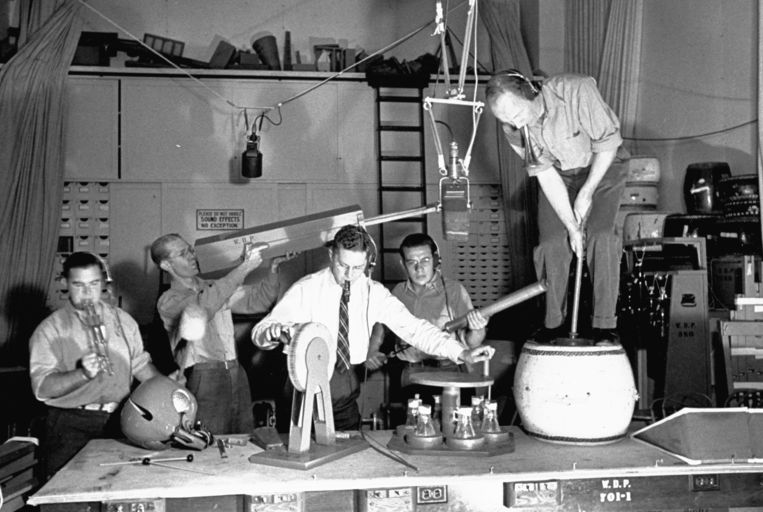
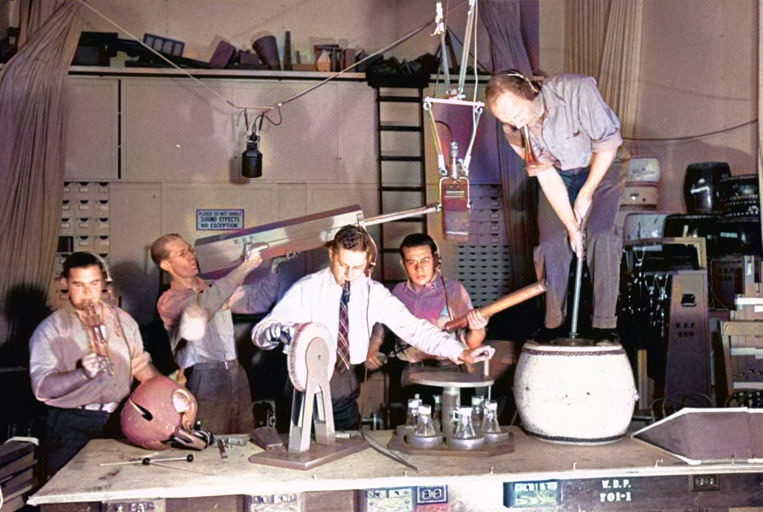
This picture depicts foley artists in the sound production room at Walt Disney Studio using hanging mikes and a handheld boom to record sounds for Disney movies. To dig deeper into the early years of Foley, check out the ‘Foley Grail.’
Pierre Henry, GRM, 1951
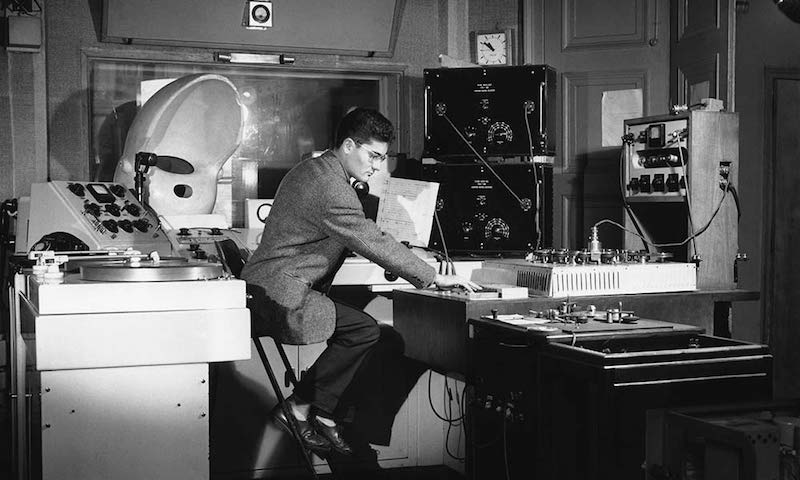
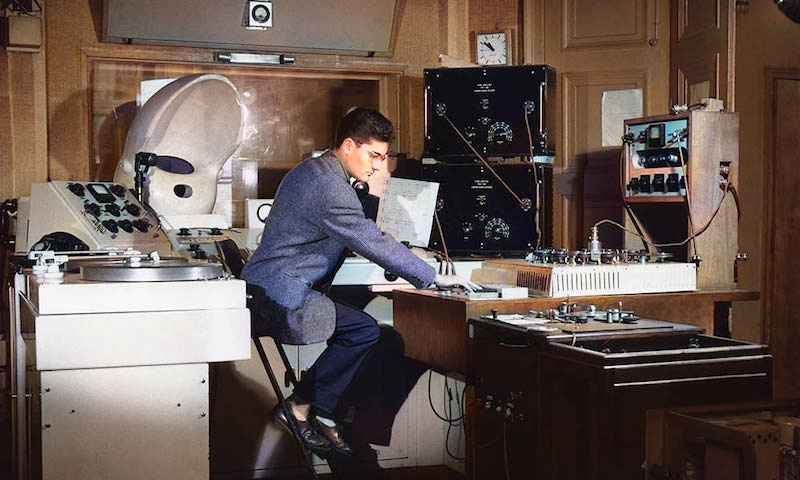
Pierre Henry was a French composer and pioneer of musique concrète. He was a founding member of the ‘Groupe de Recherches Musicales‘ (GRM) and part of a sonic laboratory founded by Pierre Schaeffer in 1951. In the studio pictured, Henry and Schaeffer wrote the groundbreaking piece of work Symphonie pour un homme seul (Symphony for a Lone Man).
Bill Putnam & Nat King Cole, Universal Recording Corporation, 1955
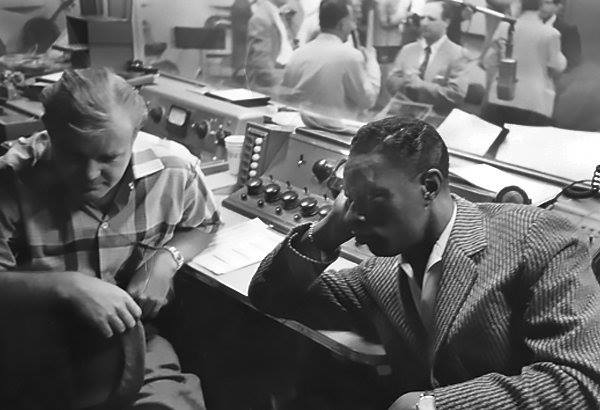
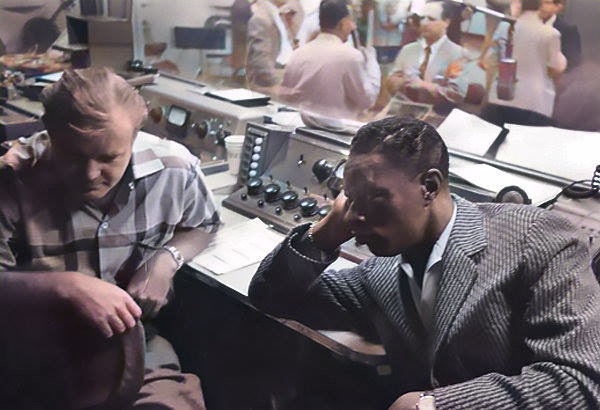
Captured here is a moment in time with Bill Putnam and Nat King Cole at Universal Recording Corporation (now Universal Audio). Putnam was a studio pioneer who created some of the most iconic studio gear of his time, which is still highly coveted. Nat King Cole was an American jazz pianist and vocalist who recorded over 40 albums and had 35 UK charting singles.
Raymond Scott, Home Recording Studio, 1959
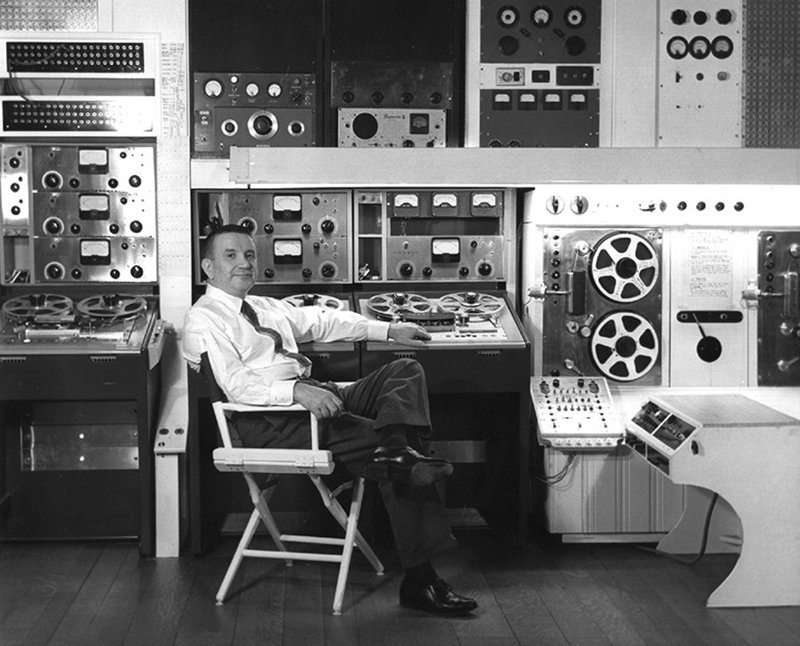
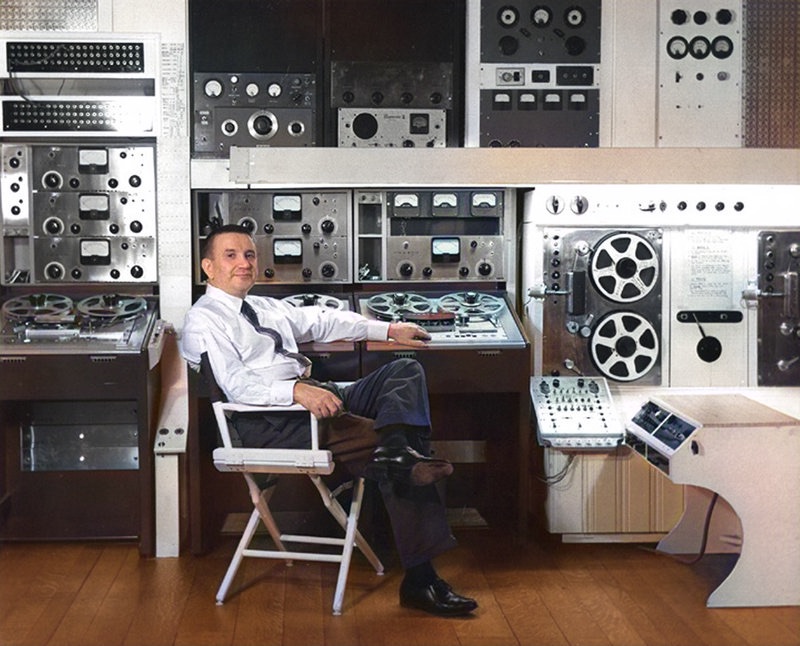
Raymond Scott was an early electronic music pioneer, composer, band leader, pianist, record producer, and inventor of electronic instruments. You may not have heard his name before, but you have most definitely heard his music. Scott’s work has been used in Bugs Bunny, Ren & Stimpy, and the Simpsons. Beyond composing, Scott spent 20 years working on an electronic music instrument dubbed the ‘Electronium,’ a generative composition music machine.
Dr. Peter Zinovieff, EMS Studio, 1959
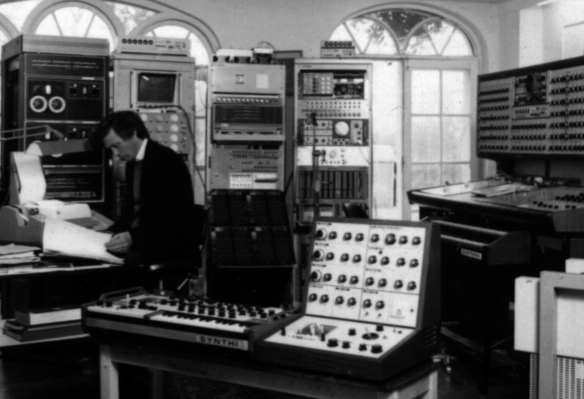
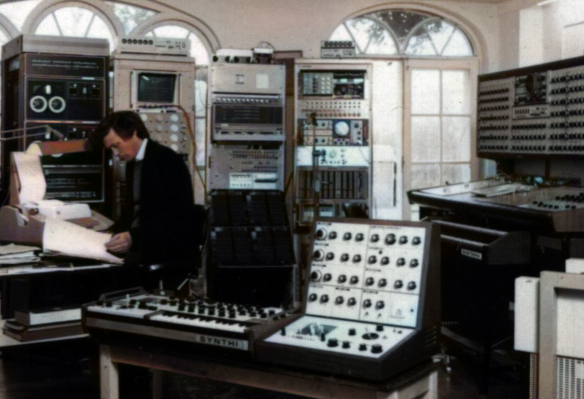
Peter Zinovieff is a British engineer and synth designer genius whose EMS company went on to make the VCS3 synthesizer in the 1960s. Zinovieff’s synths were used by the likes of Pink Floyd, David Bowie, Hans Zimmer, Brian Eno, and the Chemical Brothers. Get the inside story on the formation of EMS Studios and its contributions to the world of electronic music.
Abbey Road, Studio 2, 1960
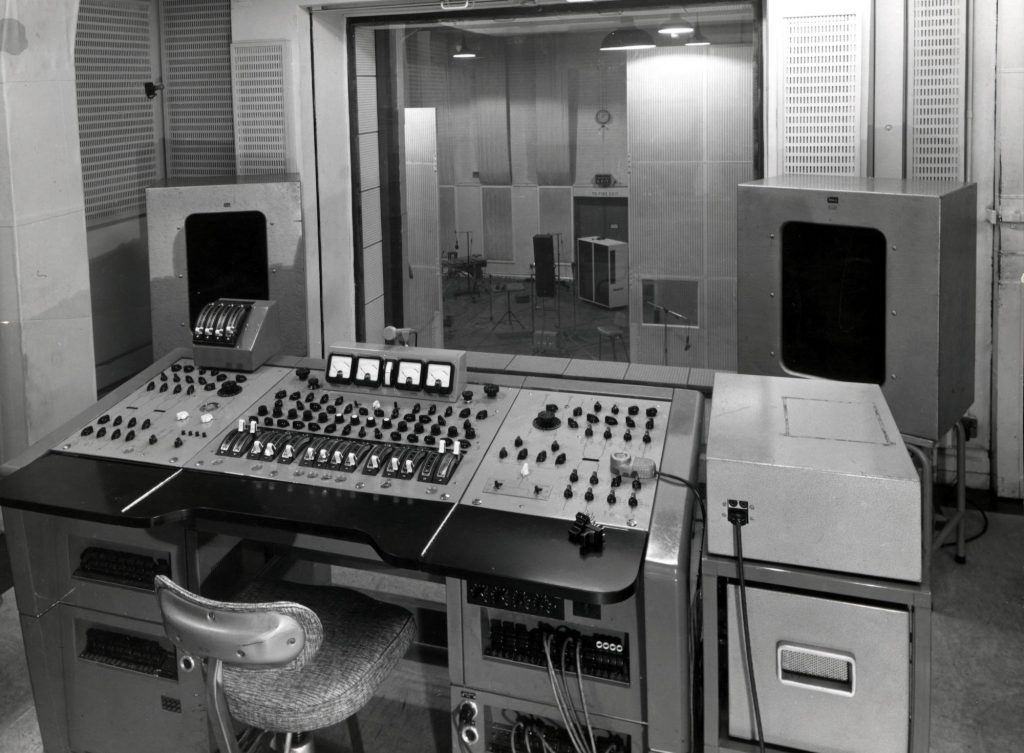
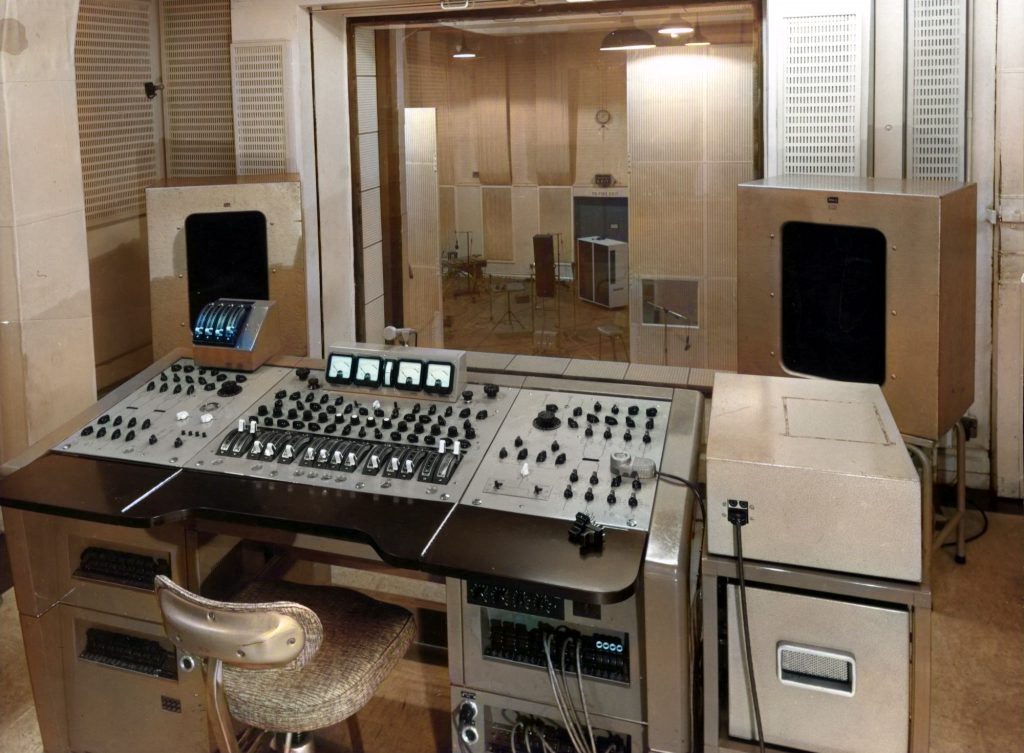
This is the mixing desk used by George Martin for the Beatles’ Sergeant Pepper album. You’ll notice the mixing desk has just 4 channels. Compare this to modern-day studios, where producers have access to unlimited channels of audio thanks to computers and digital audio workstations. It took just 4 tracks and creative tape manipulation to produce this masterpiece of an album. Modern-day producers: Take a screenshot of this image for inspiration and as a reminder of what’s possible with less in a world of overproduction.
Daphne Oram, Home Recording Studio, 1962
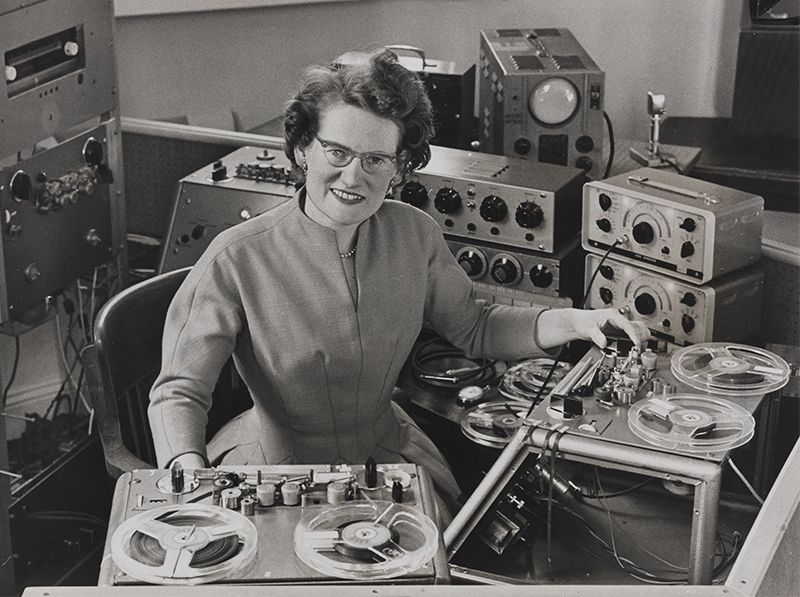
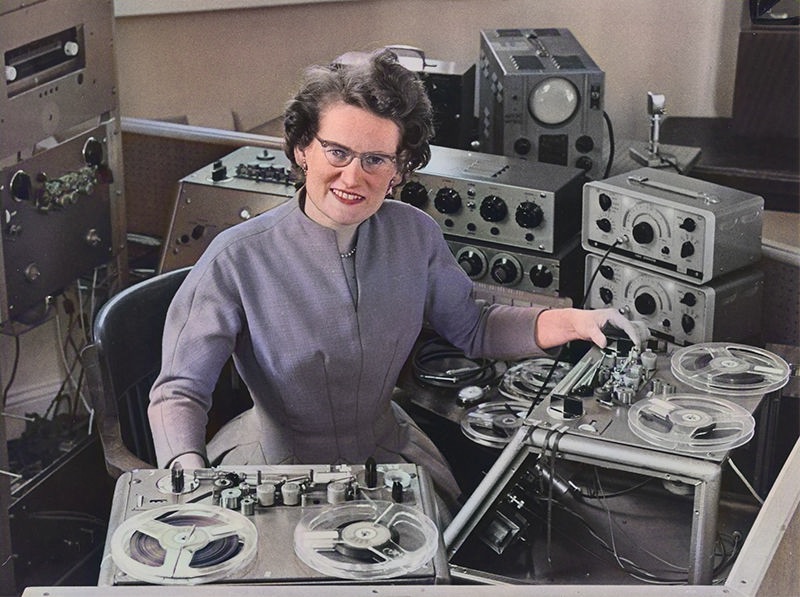
Daphne Oram was co-founder of the BBC Radiophonic Workshop and a pioneer of musique concrète in the UK. In 1948, intrigued by the possibilities of manipulating magnetic tape, Oram began building special equipment for experiments. Those experiments led Oram to create a unique technique dubbed “Oramics.” In Oram’s words: “Oramics consisted of drawing onto a set of ten sprocketed synchronized strips of 35mm film which covered a series of photo-electric cells that in turn generated an electrical charge to control the sound frequency, timbre, amplitude and duration.” Incredible music experimentalist. For a deeper dive into Oram’s legacy and philosophical approach to sound, check out her book: An Individual Note of Music, Sound and Electronics.
Delia Derbyshire, BBC Radiophonic Workshop, 1963
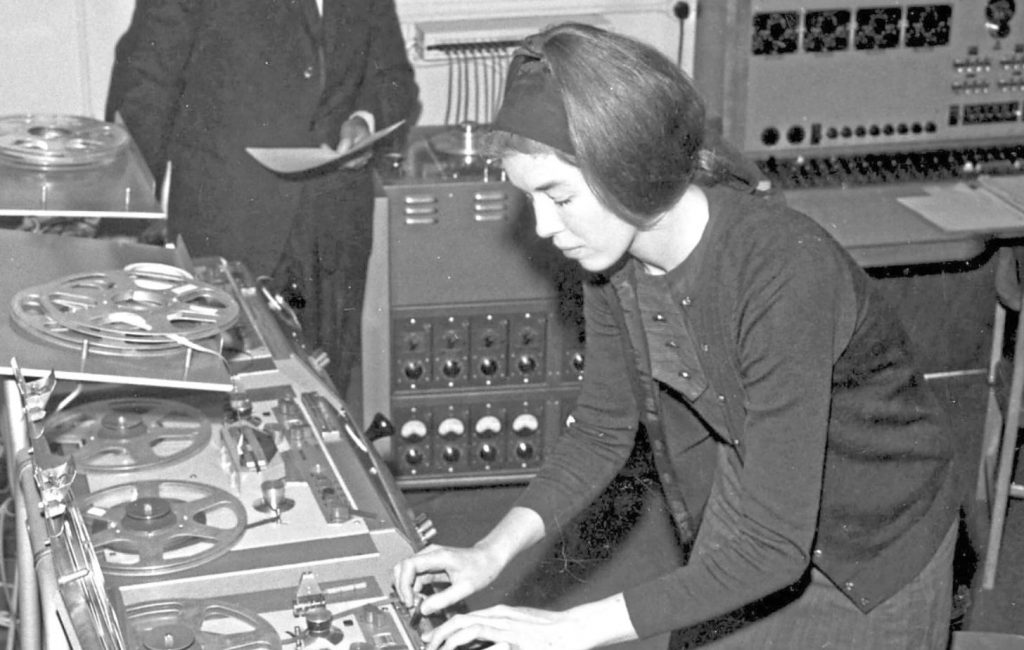
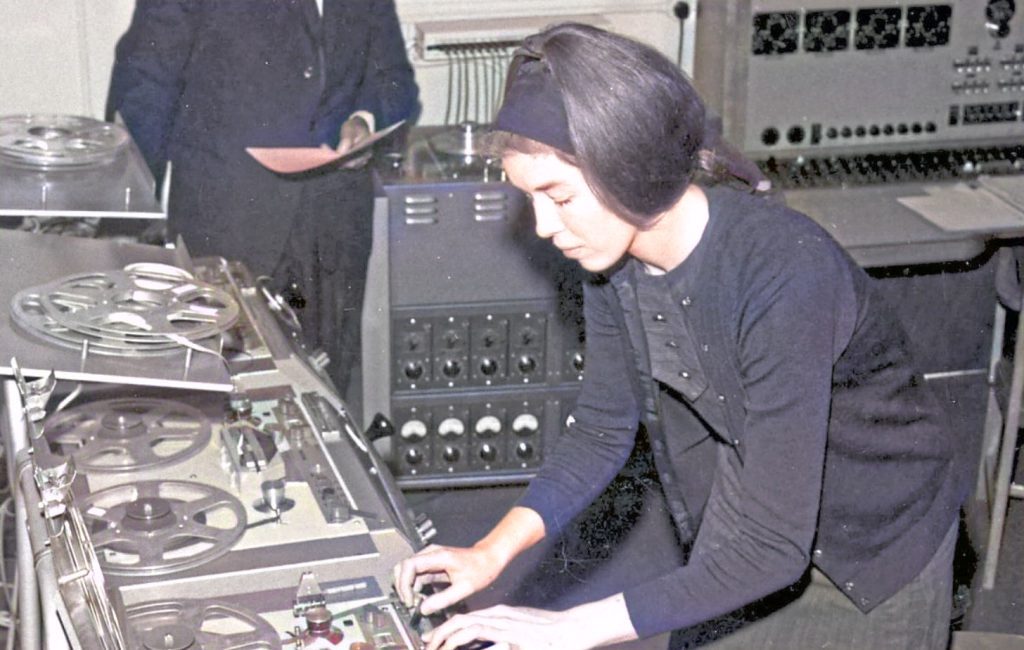
Delia Derbyshire was an electronic music pioneer who worked with the BBC Radiophonic Workshop in the 1960s. Derbyshire’s most notable work is the out-of-this-world arrangement of the Doctor Who Theme. The arrangement was created using only tape and scissors!
Polish Radio Experimental Studio, 1960s
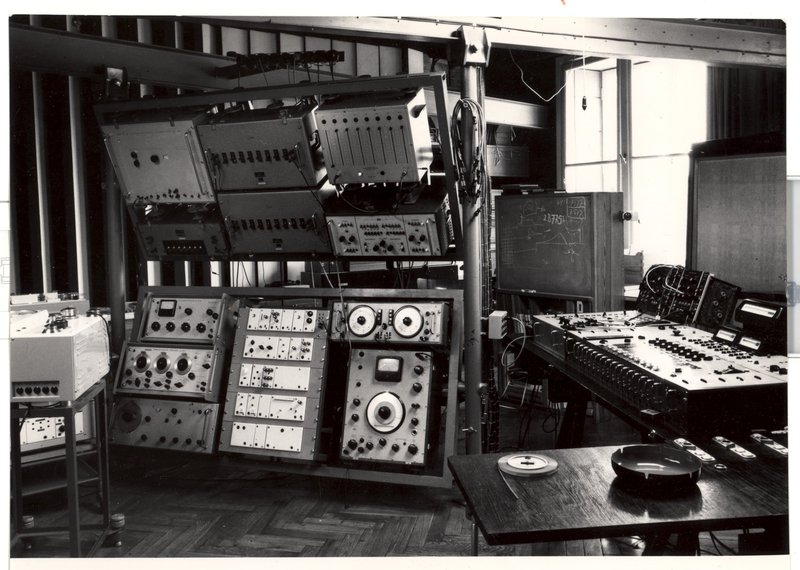
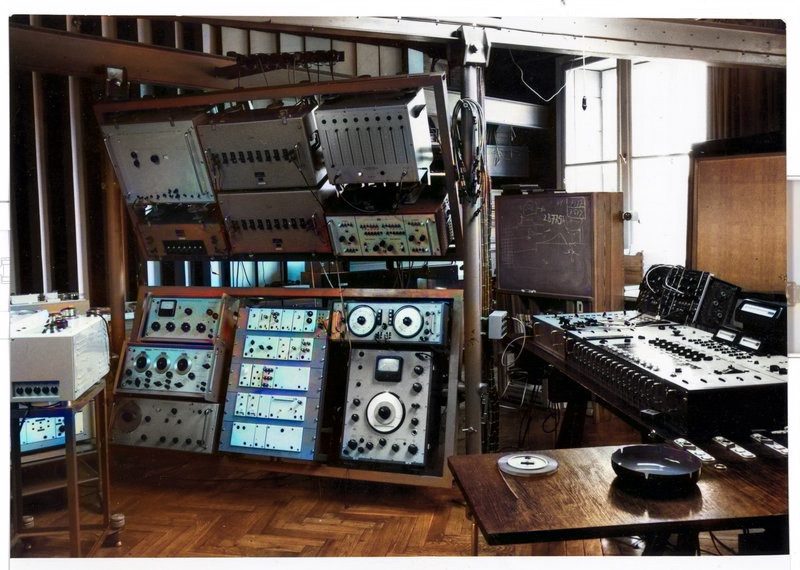
The Polish Radio Experimental Studio (Eksperymentalne Polskiego Radia) was an experimental music studio based in Warsaw, Poland. Established in 1957, the studio was used by luminary composers such as Krzysztof Penderecki, Elżbieta Sikora, and Bohdan Mazurek. Poland’s cultural institute, the Instytut Adama Mickiewicza (IAM), recently teamed up with Ableton to offer archived sounds from the studio in the form of free Ableton Racks.
EMS Studios, The Putney Studio (1970)
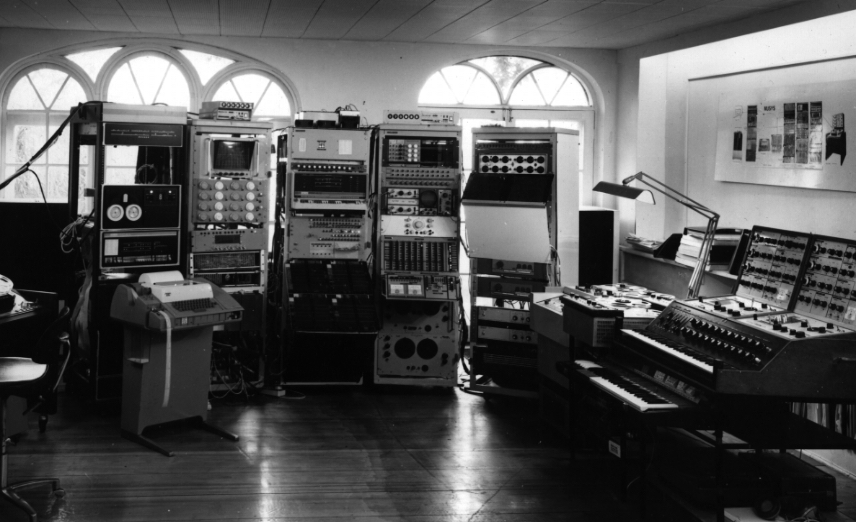
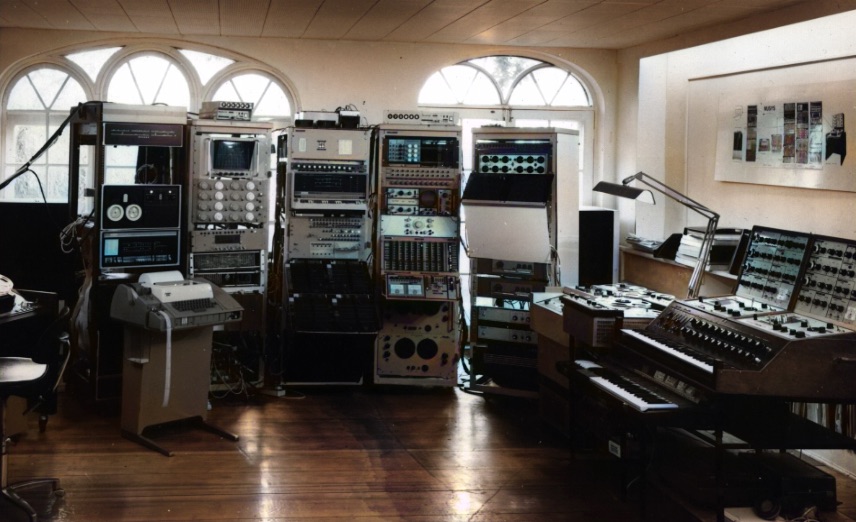
Bonus photo here of EMS Studios – this time from the Putney studio in 1970. The picture depicts 4 bays of equipment, including the PDP8/L & PDP8/S 12-bit minicomputers produced by Digital Equipment Corporation (with a price-tag of $10,000+ each). On the far right of the image, you can see two Revoxes, an EMS VCS4 live performance module, and a modified organ.
Interesting fact: the VCS4 was never commercially released, and only two exist on the planet. One is owned by Matt Black from Coldcut.
Transforming black-and-white images from the past to show music creators and studios in color is interesting. What would be even more interesting? Resurrecting audio from the past that’s currently unplayable and locked inside encrypted objects like disks, cylinders, and other audio relics from the past. This is a project that Carl Harber, a physicist at the Lawrence Berkeley Laboratory in California, is undertaking via adapting digital photography and image processing techniques used to facilitate the search for subatomic particles.
I hope you’ve enjoyed this colorized photo series of music studios and creators. Hit the social sharing buttons below to share with friends and other music lovers.
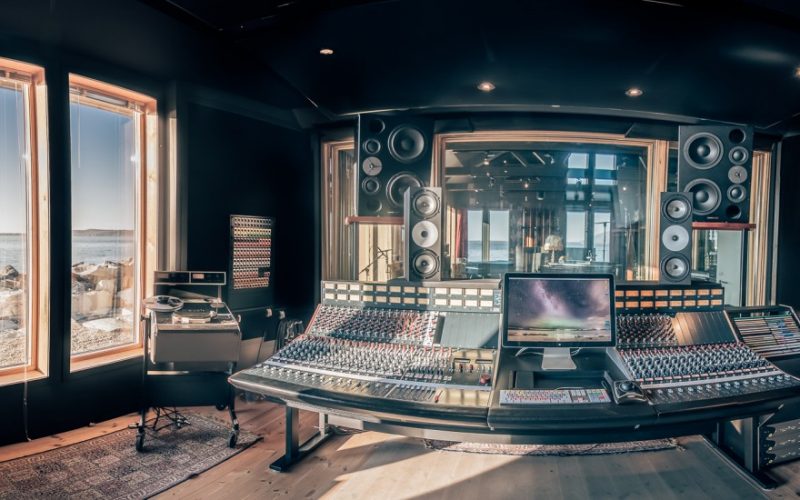
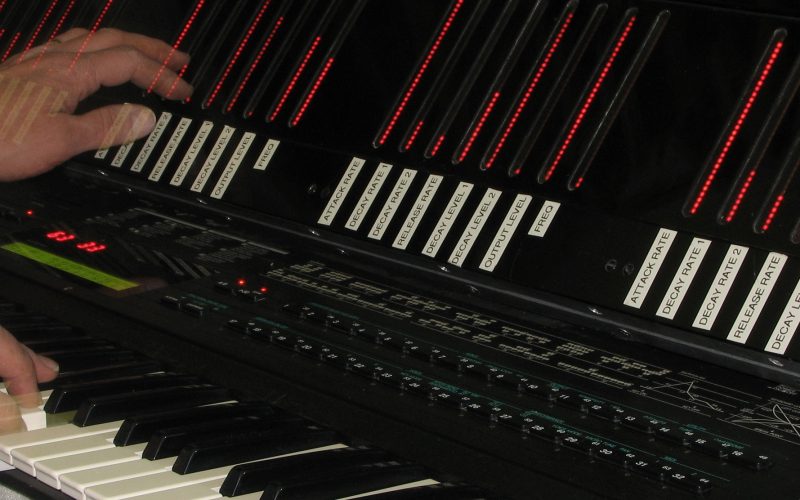
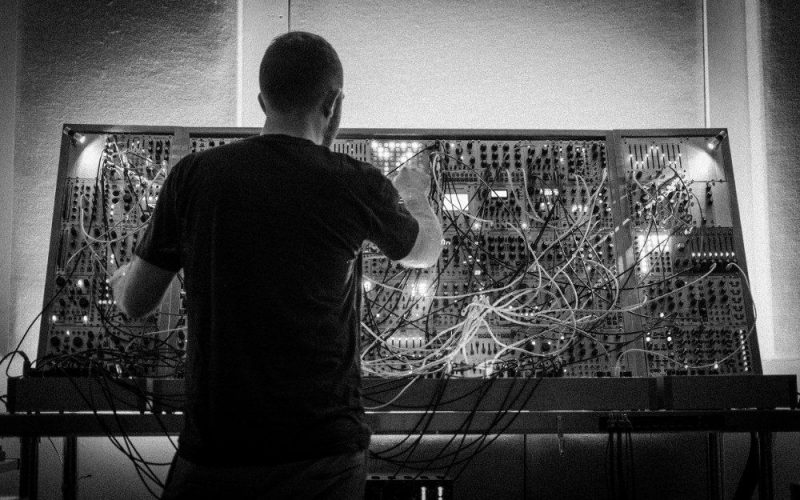
47 comments
Fascinating!
However, the photo titled “Dr. Peter Zinovieff, EMS Studio, 1959” is not quite right in the timeline. It must be 1969 or thereabouts.
Best, M
Chill-Out Music Experience reposted this Article on twitter.com.
Chill-Out Music Experience liked this Article on twitter.com.
Robert J Baldwin liked this Article on twitter.com.
Tehh liked this Article on twitter.com.
Láquesis Diana ( G.1968, Miss Antrópica, A-Ctrl) liked this Article on twitter.com.
RaymondScottArchives liked this Article on twitter.com.
DX5 Jose Maria Bara liked this Article on twitter.com.
Negative Headphone liked this Article on twitter.com.
ᐯᗩᒪIᑎᗩ᙭ liked this Article on twitter.com.
YABYAD liked this Article on twitter.com.
reaktorplayer liked this Article on twitter.com.
Atsushi Nakayama a.k.a electrounin (エレクト浪人) liked this Article on twitter.com.
Robert J Baldwin liked this Article on twitter.com.
Berzan liked this Article on twitter.com.
Henri LEFEBVRE liked this Article on twitter.com.
Alain Patrick 音楽 [µ] liked this Article on twitter.com.
𝟦𝘓𝘎𝘖𝘙𝘐𝘛𝘏𝘔𝘐𝘊 liked this Article on twitter.com.
Juho-Matias Linde liked this Article on twitter.com.
Atlas Mugged liked this Article on twitter.com.
Nuddering liked this Article on twitter.com.
Láquesis Diana ( G.1968, Miss Antrópica, A-Ctrl) liked this Article on twitter.com.
Meara O’Reilly liked this Article on twitter.com.
reaktorplayer liked this Article on twitter.com.
Alberto! liked this Article on twitter.com.
S Ξ T H liked this Article on twitter.com.
Láquesis Diana ( G.1968, Miss Antrópica, A-Ctrl) liked this Article on twitter.com.
Marek Iwaszkiewicz liked this Article on twitter.com.
samuel liked this Article on twitter.com.
Jeroen de Boer liked this Article on twitter.com.
Mike Kohler liked this Article on twitter.com.
arz – ART THEATER – liked this Article on twitter.com.
Audiotecna liked this Article on twitter.com.
CDO liked this Article on twitter.com.
The Affair liked this Article on twitter.com.
Malcolm Rees-Francis liked this Article on twitter.com.
Tehh liked this Article on twitter.com.
SN76477 liked this Article on twitter.com.
Synthphonia liked this Article on twitter.com.
DIAMONDCAT liked this Article on twitter.com.
Menenko liked this Article on twitter.com.
Oliver Hickman liked this Article on twitter.com.
Shekhar Raj Dhain liked this Article on twitter.com.
Christopher Kissel liked this Article on twitter.com.
Christopher Kissel liked this Article on twitter.com.
Bill Putnam & Nat King Cole 1955 spectralplex.com/12-historical-…
“Enjoy these historical moments in time, never seen before in color.” spectralplex.com/12-historical-…